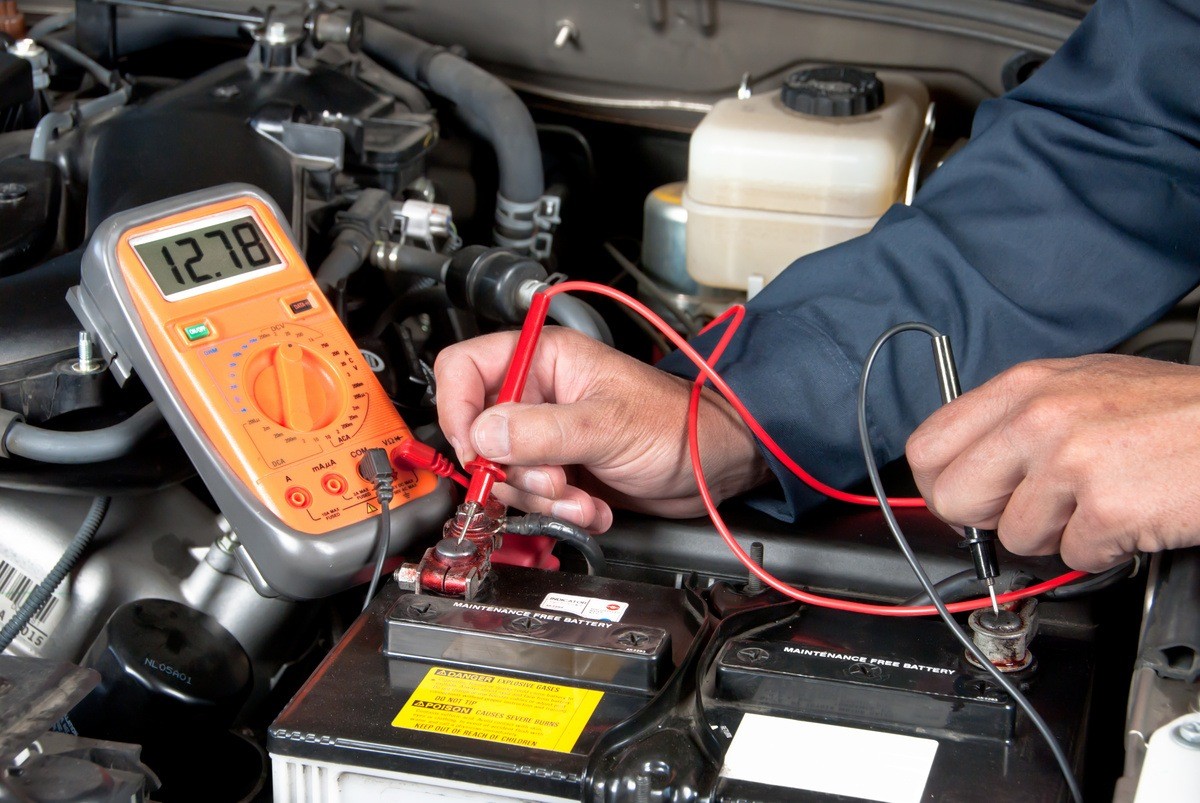Your car relies on a healthy battery to start and power its electrical components. It can be frustrating when your car fails to start, and often, a dead battery is the culprit. But how do you know for sure if your car battery is truly dead, or if it’s just discharged? Recognizing the signs can save you time and prevent unnecessary expenses. This guide will walk you through the key indicators of a dead car battery, helping you diagnose the problem and take appropriate action.
Signs of a Discharged Battery
Sometimes, your car battery isn’t dead, but simply discharged. This often happens if you accidentally leave your headlights or interior lights on, or if the car sits unused for an extended period. Here are some signs that suggest your battery might be discharged:
- Slow Engine Crank: When you turn the ignition key, you might hear the engine cranking slowly or struggling to turn over. This is often accompanied by a weak “rur-rur-rur” sound instead of the usual brisk engine start. While a slow crank can also indicate a problem with the starter motor, a discharged battery is a more common cause.
- Dim Interior Lights: Noticeably dimmer dome lights or map lights when you open the car door are a classic sign of a weak battery. These lights draw directly from the battery, and their brightness is a good visual indicator of your battery’s charge level.
- Electrical Accessories Not Working Properly Before Starting: Try turning on your radio or windshield wipers before starting the engine. If they are weak, don’t turn on at all, or function erratically, it could indicate insufficient power from the battery.
- Dim Headlights: If your headlights appear weaker than usual, especially when the engine is off, it’s another potential sign of a low battery charge. Headlights require significant power, and a discharged battery will struggle to provide full brightness.
- Recent Jump Starts: If you’ve had to jump-start your car recently, it’s a strong indication that your battery is struggling to hold a charge. While a jump start can get you going temporarily, it doesn’t fix the underlying issue of a potentially weakening battery.
- Heating or Air Conditioning Issues with Engine Off: Modern cars often allow you to run the heating or air conditioning briefly before starting the engine. If these systems fail to operate or are very weak in this pre-start mode, it can point to a discharged battery that lacks the power to run these energy-intensive features.
 car mechanic checking charge on battery
car mechanic checking charge on battery
If you observe these signs, your battery might just be discharged. You can attempt to recharge it by using a battery charger or by taking your car for a drive. Driving at highway speeds for 30-60 minutes can often recharge a mildly discharged battery, as the alternator replenishes the battery’s charge while the engine is running. However, if your car is struggling to start at all, using a battery charger is the more reliable first step.
Signs of a Dead Battery
While a discharged battery can often be revived, a truly dead battery is nearing the end of its lifespan and likely needs replacement. Car batteries typically last for 3 to 5 years, but factors like extreme temperatures, driving habits, and electrical load can shorten their life. Here are signs that suggest your car battery is dead or severely damaged:
- Car Won’t Start At All: This is the most definitive sign of a dead battery. When you turn the key, there is absolutely no response – no engine cranking, no clicking or whirring sounds, just silence.
- No Electrical Power: Along with the car not starting, you may notice a complete lack of electrical power. This means no dome light when you open the door, no door chime, and the central locking system may not function.
- Headlights and Radio Won’t Turn On: Even when the engine is off, a healthy battery should be able to power the headlights and radio. If these components fail to turn on at all, it strongly suggests a dead battery.
- Morning Start Problems, But Fine Later: If your car struggles to start in the morning, especially after a cold night, but starts fine later in the day, it indicates that your battery is likely draining too quickly overnight. This is a sign of a battery that’s losing its capacity and struggling to hold a charge.
- Swollen or Cracked Battery Case: Visually inspect your battery case. Extreme temperatures and overcharging can cause the battery case to swell or crack. This is due to internal pressure buildup and indicates significant battery degradation. While car batteries don’t pose the same fire risk as swollen lithium-ion batteries in electronics, a swollen car battery is a clear sign of decreased performance and the need for immediate replacement.
- Corrosion on Battery Terminals: Check the battery terminals (the points where cables connect to the battery posts). Visible white, powdery corrosion buildup can impede electrical flow and contribute to starting problems. While terminal corrosion can sometimes be cleaned, it’s often a sign of an aging battery.
- Battery Age: Consider the age of your car battery. If it’s older than 3 years, especially if it’s been subjected to harsh conditions, it’s more likely to be nearing the end of its life. Proactive replacement around the 3-5 year mark can prevent unexpected breakdowns.
If you suspect a dead battery based on these signs, replacement is usually the best course of action. While you can attempt to jump-start a dead battery, it’s often a temporary fix, and the battery is likely to fail again soon. For reliable starting and electrical performance, replacing a dead battery is recommended.
For professional battery inspection and replacement services, contact a trusted automotive service center. They can accurately diagnose your battery’s condition and recommend the appropriate solution to get you back on the road with confidence.